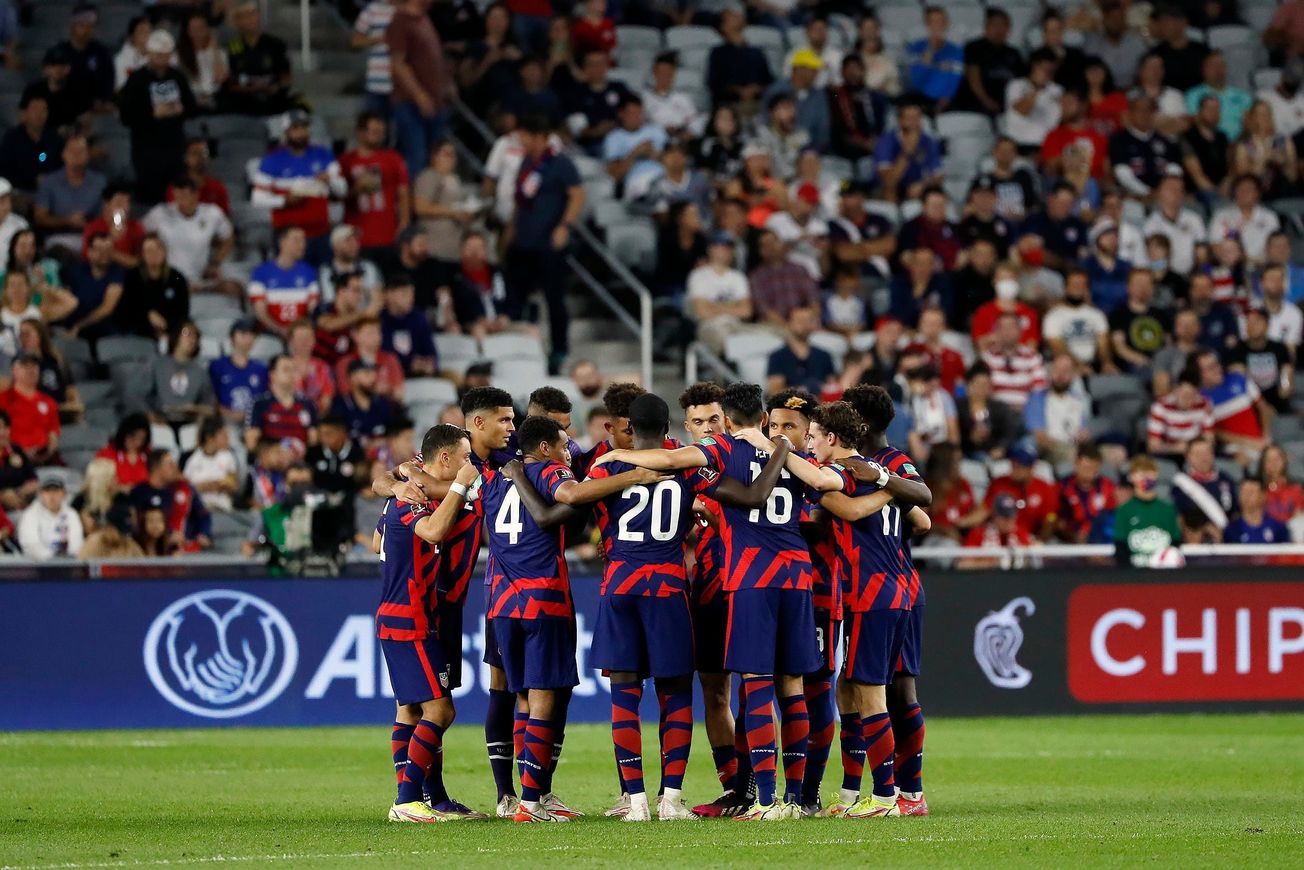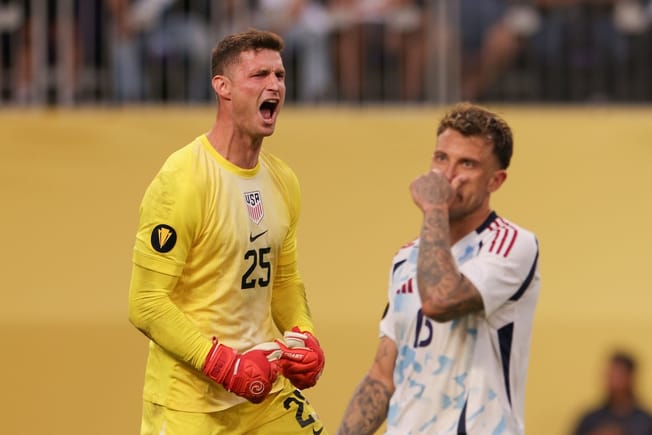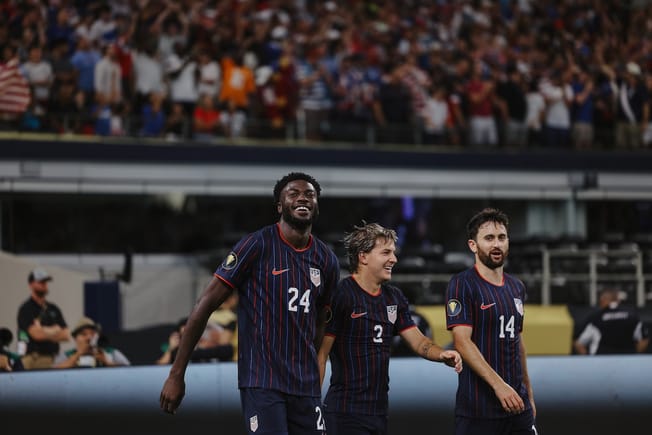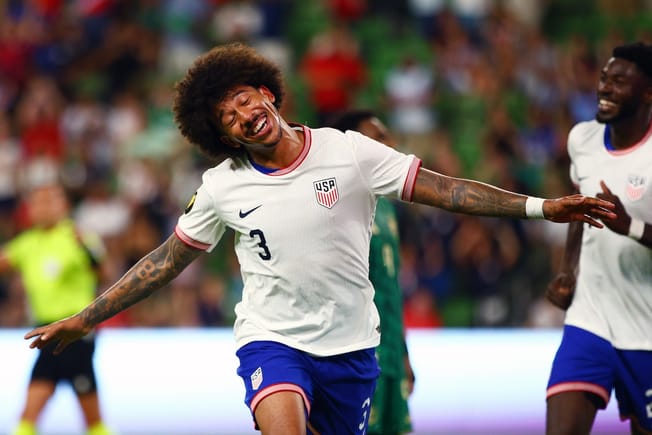June is a busy month for the U.S. men’s national team, and a bit of a strange one. They’ve got games against some bigger names in Morocco and Uruguay, countries the USMNT will need to show they can compete with if they have any hope of making noise at the World Cup. Then, they move from friendlies to actual competition, with a home tie against Grenada and a tricky away match against El Salvador.
I don’t know exactly what to expect from the U.S. in these games. But I do know there are several players here that have more to play for than others.
Let’s talk about those players with something to prove, shall we?
1. CAMERON CARTER-VICKERS
Coming back into the national team after a long spell away is a big moment for any player. It’s perhaps an even bigger one for Cameron Carter-Vickers, who has been on the outside looking into the national team picture for much of Gregg Berhalter’s tenure, but finds himself in a position where he could feasibly play himself right into the first choice XI.
The June camp feels like open auditions for the spot that Miles Robinson once occupied with the national team. Carter-Vickers, who’s been something of a one-man loan army for Tottenham since his youth days, stands as good a chance as anyone to make an impression here.
Need one reason to believe it just might happen? Celtic fans and pundits alike have praised CCV all year for his consistency and for being one of Scotland’s most reliable defenders on a week-to-week basis.
Sounds pretty similar to the reason Robinson had a stranglehold on that center back position, to me. CCV doesn’t quite have Robinson’s aerial presence, but there are very few players in the pool that can match his strength in duels. It also seems like he’s improved his ability to read the game and anticipate plays before they happen. USMNT fans will be keeping an eye on every center back this window, but Carter-Vickers is the player that intrigues me most at the moment.
2. HAJI WRIGHT
Haji Wright isn’t coming in from the cold as much as he was chiseled from the ice. The last time he was with any U.S. team with any regularity was the end of the 2015 U-17 cycle. He had a couple stints with the U-19s and U-23s since then, but for the most part, Wright has been winding one of the most improbable paths through Europe to the national team.
His former youth teammates, however, sound thrilled to have him back.
Forward is also right next to center back on the “most open positions” list for the USMNT right now.
What’s more, Haji is going to be in camp with a player who will be his chief competition for that spot: Jesus Ferreira. Despite their vastly different body types (Ferreira is 5’8”; Wright is 6’3”), the two have more similarities than you might think. Neither appears to prefer to play as a target No. 9, although Wright can do the job when it’s asked of him. Instead, these are forwards who like the ball at their feet, who like sneaking into scoring positions and trying to make defenders miss.
Of the two players, Wright obviously presents a more unique blend of size and skill, and there will be a wide variety of defensive tests waiting for him in this camp. The U.S. will likely be treated to Uruguay’s suffocating low block, Morocco’s back five with their wingbacks flying up the wings, and then head straight into Concacaf Nations League play. The objective is simple for Wright: get in there and influence the game. Prove that you can be an attacking threat and get into goal-scoring positions.
Scoring one or two wouldn’t hurt, either.
3. JESUS FERREIRA
Can’t have one without the other, right?
I’m unconvinced by the MLS Golden Boot leader. He’s proven he can score in MLS, I’ll give him that. But he’s still an odd pick for the U.S.’s No. 9, as he’s really more of a second forward than anything else, and one who makes up for a limited athletic ceiling with guile and an ability to run off of people’s shoulders. He thrives when he can interchange and ghost into space…which is something the U.S. didn’t really excel at doing with its forwards during World Cup qualifying.
Ferreira showed flashes of his quality during qualifying, and he also missed a couple gimmes.
If he’s really going to be the starting striker of the national team, those are the opportunities he needs to find with greater frequency. We can forgive missing a couple easy ones if the opportunities (and, by extension, the goals) keep coming. If he’s not working himself into more consistent scoring opportunities, those misses are going to weigh ever more heavily on his case to be a starter.
4. LUCA DE LA TORRE
Luca is an interesting one. He played his way back to the national team after Fulham left him to wither on the vine, and he took his fate into his own hands with a move to the Netherlands.
The move was good for him, and he made himself an indispensable midfield cog for Heracles.
His play with the national team wasn’t perfect in qualifying, but man, was the guy good at finding players in space and making quick little moves to progress the ball up the field.
Now, there is a question of what exactly his role is in the U.S.’s midfield. Is he an alternative to Yunus Musah? Or Weston McKennie? Does it matter? I think, ideally, Musah will develop more of de la Torre’s instincts in progressing play through the midfield to go with his ability on the ball. That hasn’t happened on a consistent basis yet, though, and as a result, LDLT has entered the fold.
If de la Torre is going to be included in the World Cup roster, it’s up to him to keep showing that he’s a unique midfielder in the USMNT pool – and this camp is a great place to do that.
5. CRISTIAN ROLDAN
Similar to de la Torre, Cristian Roldan has a bit of a midfield identity crisis with the national team, although his is on an even larger scale.
Why is he always listed as a midfielder when Berhalter almost always uses him as cover on the wing? Weston McKennie described him as “probably the biggest team player I’ve ever met in my life,” but is that quality enough to warrant an inclusion on a World Cup roster, one where the starters in midfield are already well-established?
And then there is his play with the Sounders, which is so, so good. It’s easy to see why Seattle fans get so defensive about his role with the national team, when large swathes of the online USMNT fandom lambast his selections. He really can do it all for the Sounders: score goals, notch assists, make clutch defensive plays, and buzz around the field. At his best, he’s one of those players who possesses the magical quality of being in three places at the same time. We don’t see that very often with the U.S. from Roldan. Maybe that’s because he’s a positional nomad under Berhalter.
Whatever the case, Roldan is due for a stand-out game or two with the national team. And if he wants to solidify his case for being on that World Cup roster, he really needs one.







Comments